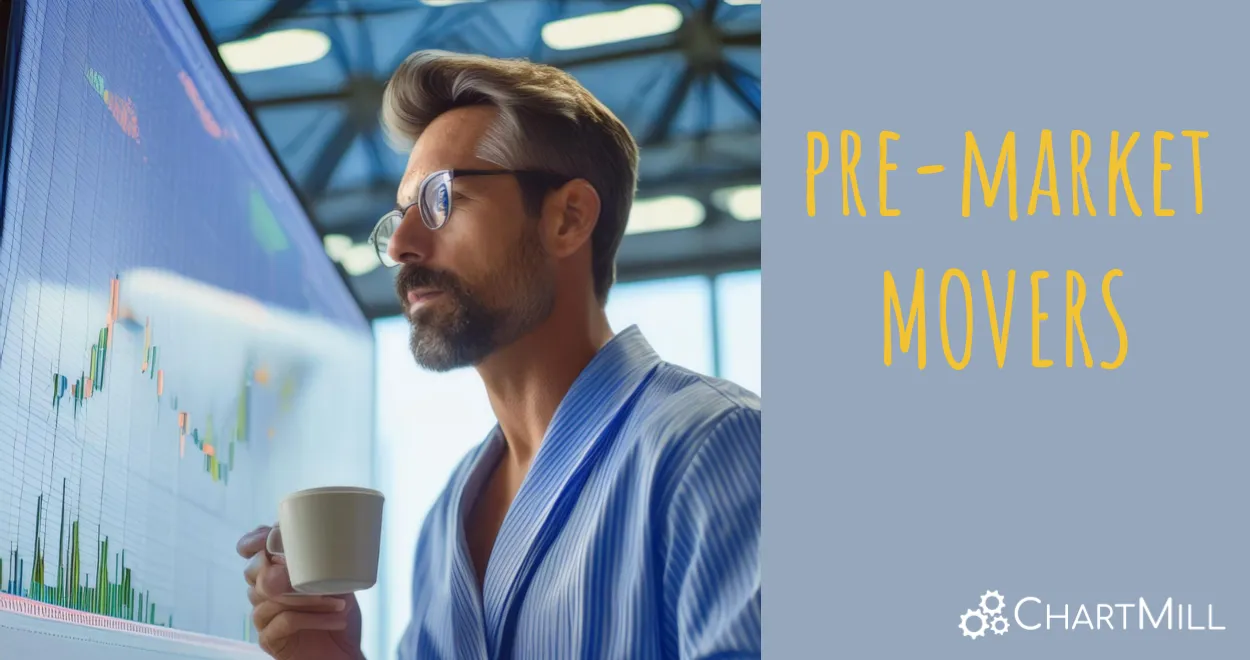NYSE:VST appears to be flying under the radar despite its strong fundamentals.
By Mill Chart
Last update: Jan 30, 2024
Our stock screener has spotted VISTRA CORP (NYSE:VST) as an undervalued stock with solid fundamentals. NYSE:VST shows decent health and profitability. At the same time it remains remains attractively priced. We'll dive into each aspect below.
Valuation Assessment of NYSE:VST
An integral part of ChartMill's stock analysis is the Valuation Rating, which spans from 0 to 10. This rating evaluates diverse valuation factors, including price to earnings and cash flows, while considering the stock's profitability and growth. NYSE:VST has received a 9 out of 10:
- The Price/Earnings ratio is 11.93, which indicates a very decent valuation of VST.
- VST's Price/Earnings ratio is rather cheap when compared to the industry. VST is cheaper than 80.95% of the companies in the same industry.
- VST's Price/Earnings ratio indicates a rather cheap valuation when compared to the S&P500 average which is at 26.24.
- With a Price/Forward Earnings ratio of 10.16, the valuation of VST can be described as very reasonable.
- Based on the Price/Forward Earnings ratio, VST is valued cheaper than 95.24% of the companies in the same industry.
- The average S&P500 Price/Forward Earnings ratio is at 21.49. VST is valued rather cheaply when compared to this.
- Based on the Enterprise Value to EBITDA ratio, VST is valued cheaper than 95.24% of the companies in the same industry.
- Compared to the rest of the industry, the Price/Free Cash Flow ratio of VST indicates a rather cheap valuation: VST is cheaper than 85.71% of the companies listed in the same industry.
- The low PEG Ratio(NY), which compensates the Price/Earnings for growth, indicates a rather cheap valuation of the company.
- VST's earnings are expected to grow with 49.55% in the coming years. This may justify a more expensive valuation.
Evaluating Profitability: NYSE:VST
Discover ChartMill's exclusive Profitability Rating, a proprietary metric that assesses stocks on a scale of 0 to 10. It takes into consideration various profitability ratios and margins, both in absolute terms and relative to industry peers. Notably, NYSE:VST has achieved a 5:
- The Return On Assets of VST (4.01%) is better than 85.71% of its industry peers.
- Looking at the Return On Equity, with a value of 23.27%, VST belongs to the top of the industry, outperforming 100.00% of the companies in the same industry.
- VST has a Return On Invested Capital of 8.77%. This is amongst the best in the industry. VST outperforms 100.00% of its industry peers.
- VST's Profit Margin of 8.23% is fine compared to the rest of the industry. VST outperforms 61.90% of its industry peers.
- With an excellent Gross Margin value of 88.16%, VST belongs to the best of the industry, outperforming 90.48% of the companies in the same industry.
Health Analysis for NYSE:VST
ChartMill assigns a Health Rating to every stock. This score ranges from 0 to 10 and evaluates the different health aspects like liquidity and solvency, both absolutely, but also relative to the industry peers. NYSE:VST scores a 5 out of 10:
- The Altman-Z score of VST (1.05) is better than 76.19% of its industry peers.
- VST has a better Debt to FCF ratio (6.71) than 90.48% of its industry peers.
Growth Analysis for NYSE:VST
Every stock receives a Growth Rating from ChartMill, ranging from 0 to 10. This rating assesses various growth aspects, including historical and projected EPS and revenue growth. NYSE:VST boasts a 5 out of 10:
- The Earnings Per Share has grown by an impressive 446.94% over the past year.
- The Revenue has grown by 18.19% in the past year. This is quite good.
- VST shows a strong growth in Revenue. Measured over the last years, the Revenue has been growing by 20.38% yearly.
- Based on estimates for the next years, VST will show a very strong growth in Earnings Per Share. The EPS will grow by 31.29% on average per year.
Every day, new Decent Value stocks can be found on ChartMill in our Decent Value screener.
Check the latest full fundamental report of VST for a complete fundamental analysis.
Keep in mind
Important Note: The content of this article is not intended as trading advice. It is essential to perform your own analysis and exercise caution when making trading decisions. The article presents observations created by automated analysis but does not guarantee any trading or investment outcomes. Always trade responsibly and make independent judgments.
NYSE:VST (2/19/2025, 2:51:08 PM)
169.241
-0.04 (-0.02%)
Find more stocks in the Stock Screener
VST Latest News and Analysis
 16 days ago - ChartmillThese S&P500 stocks that are showing activity before the opening bell on Monday.
16 days ago - ChartmillThese S&P500 stocks that are showing activity before the opening bell on Monday.Wondering what's happening in today's pre-market session? Stay tuned for the latest updates on S&P500 stock movements.
 19 days ago - ChartmillTop S&P500 movers in Friday's session
19 days ago - ChartmillTop S&P500 movers in Friday's sessionStay updated with the movements of the S&P500 index in the middle of the day on Friday. Discover which stocks are leading as top gainers and losers in today's session.
 20 days ago - ChartmillTop S&P500 movers in Thursday's session
20 days ago - ChartmillTop S&P500 movers in Thursday's sessionLet's have a look at what is happening on the US markets one hour before the close of the markets on Thursday. Below you can find the top S&P500 gainers and losers in today's session.
 20 days ago - ChartmillCurious about which S&P500 stocks are generating unusual volume on Thursday? Find out below.
20 days ago - ChartmillCurious about which S&P500 stocks are generating unusual volume on Thursday? Find out below.Let's have a look at the S&P500 stocks with an unusual volume in today's session.
 20 days ago - ChartmillExplore the top gainers and losers within the S&P500 index in today's session.
20 days ago - ChartmillExplore the top gainers and losers within the S&P500 index in today's session.Get insights into the S&P500 index performance on Thursday. Explore the top gainers and losers within the S&P500 index in today's session.
 20 days ago - ChartmillThese S&P500 stocks that are showing activity before the opening bell on Thursday.
20 days ago - ChartmillThese S&P500 stocks that are showing activity before the opening bell on Thursday.Stay updated with the S&P500 stocks that are on the move in today's pre-market session.



